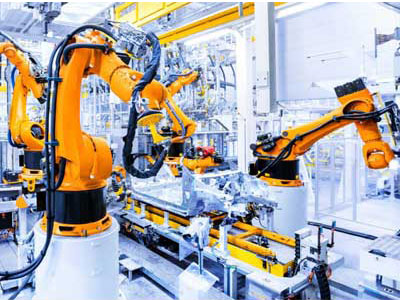Key Takeaway
The maximum speed of industrial robots varies based on their design and application. Generally, industrial robots can move up to 1 meter per second when precise trajectory is crucial. High accuracy is needed for circular and straight-line motions. Advanced algorithms optimize these movements for efficiency and precision. For other applications, speeds may be higher, but they depend on the robot’s purpose and the complexity of the tasks. Always check the robot’s specifications for exact speed capabilities.
Factors Influencing Speed
Speed in industrial automation hinges on several critical factors. Precision engineering, efficient motor control, and streamlined processes are paramount. Factors like optimal voltage regulation, responsive sensor technology, and robust communication protocols also play pivotal roles. Each component must harmonize to ensure peak operational efficiency and reliability. Understanding these dynamics not only enhances productivity but also minimizes downtime and maintenance costs. In the realm of industrial automation, achieving and maintaining optimal speed is a multifaceted endeavor demanding meticulous attention to detail.

Typical Speed Ranges
Industrial robots operate within diverse speed ranges, tailored to their specific designs and applications. SCARA robots, renowned for their high-speed capabilities, can reach impressive speeds of up to 10,000 mm/s. This makes them ideal for tasks that demand rapid motion, such as packaging and material handling. SCARA robots’ swift movements enable them to perform repetitive tasks with exceptional efficiency, significantly boosting productivity in high-speed manufacturing environments.
On the other hand, articulated robots, known for their versatility due to multiple axes, typically operate at speeds between 1,000 to 5,000 mm/s. This range allows them to perform a wide variety of tasks with precision and adaptability. Their ability to maneuver in complex patterns makes them suitable for applications requiring dexterity, such as welding and assembly operations.
Delta robots, often employed in the food and pharmaceutical industries, can achieve astonishing speeds exceeding 12,000 mm/s. Their high speed and precision make them perfect for tasks like sorting, packaging, and handling delicate products. These robots’ unique design enables them to perform rapid and precise movements, ensuring efficiency and accuracy in high-speed production lines.
Understanding these speed ranges is crucial for selecting the right robot for specific manufacturing processes. By matching the robot’s speed capabilities with the task requirements, industries can optimize their operations, enhancing both productivity and product quality.
Speed vs. Precision
In industrial robotics, balancing speed and precision is paramount. High-speed operations can sometimes compromise accuracy, which is unacceptable in tasks requiring meticulous precision. For instance, electronic assembly or medical device manufacturing demands exact positioning and movement. To achieve this balance, advanced control algorithms and sensors are employed to maintain precision even at high speeds.
Vision systems play a crucial role in enhancing accuracy. They provide real-time feedback, allowing the robot to make on-the-fly adjustments. This ensures that despite operating at high speeds, the robot can maintain the required precision. In automotive manufacturing, where both speed and precision are essential, robots are often fine-tuned to optimize these parameters. This results in consistent quality and efficiency, crucial for mass production environments.
Moreover, the integration of sophisticated software allows for predictive maintenance and error correction, further improving the robots’ performance. By continuously monitoring the robots’ operations, potential issues can be identified and rectified promptly, minimizing downtime and maintaining optimal performance levels.
High-Speed Applications
High-speed industrial robots are indispensable in applications where time efficiency is paramount. In the packaging industry, these robots swiftly handle tasks like sorting, labeling, and palletizing, significantly reducing cycle times. Imagine a newly joined engineer witnessing robots effortlessly managing hundreds of packages per minute. This speed translates to higher throughput and lower operational costs. In electronics manufacturing, high-speed robots are crucial for tasks such as PCB assembly and component placement. Here, precision and speed are critical to meet production targets and maintain quality. Picture robots accurately placing tiny components on a circuit board at lightning speed, ensuring each piece is perfectly aligned. The food industry also benefits from high-speed robots, especially in tasks like sorting and packing. Maintaining hygiene standards alongside efficiency is vital in this sector. Robots can handle delicate food items quickly without compromising cleanliness. These applications highlight the essential role of high-speed robots in enhancing productivity across various sectors. For a new engineer, understanding these applications is key to appreciating how automation drives efficiency and innovation in modern industries.
Future Developments
The future of industrial robotics promises even greater advancements in speed and efficiency. With the integration of artificial intelligence (AI) and machine learning, robots are becoming smarter, capable of learning and adapting to new tasks faster than ever. Imagine robots that can instantly adjust to changes in the production line, optimizing their performance in real-time. Innovations in materials science are also leading to the development of lighter and more durable robotic components. This enhancement in material properties allows robots to operate at higher speeds without compromising stability. Additionally, advancements in power supply technologies are enabling robots to work longer and more efficiently. For example, new battery technologies or energy management systems can provide continuous power, reducing downtime. These developments are paving the way for robots that are not only faster but also more versatile and reliable. As a newly joined engineer, keeping an eye on these trends is crucial. Embracing these technologies will be essential for staying competitive in the evolving landscape of modern manufacturing. Understanding the potential of AI, material science, and power supply advancements will help engineers leverage these innovations to meet the demands of future industrial applications.
Conclusion
The speed of industrial robots is crucial for enhancing efficiency and productivity in manufacturing. Optimizing robot speed reduces cycle times, boosts output, and improves overall operational efficiency. However, balancing speed with precision is vital to ensure safety and quality in industrial processes. By fine-tuning speeds according to specific tasks and safety standards, manufacturers can achieve optimal performance while maintaining operational integrity.
